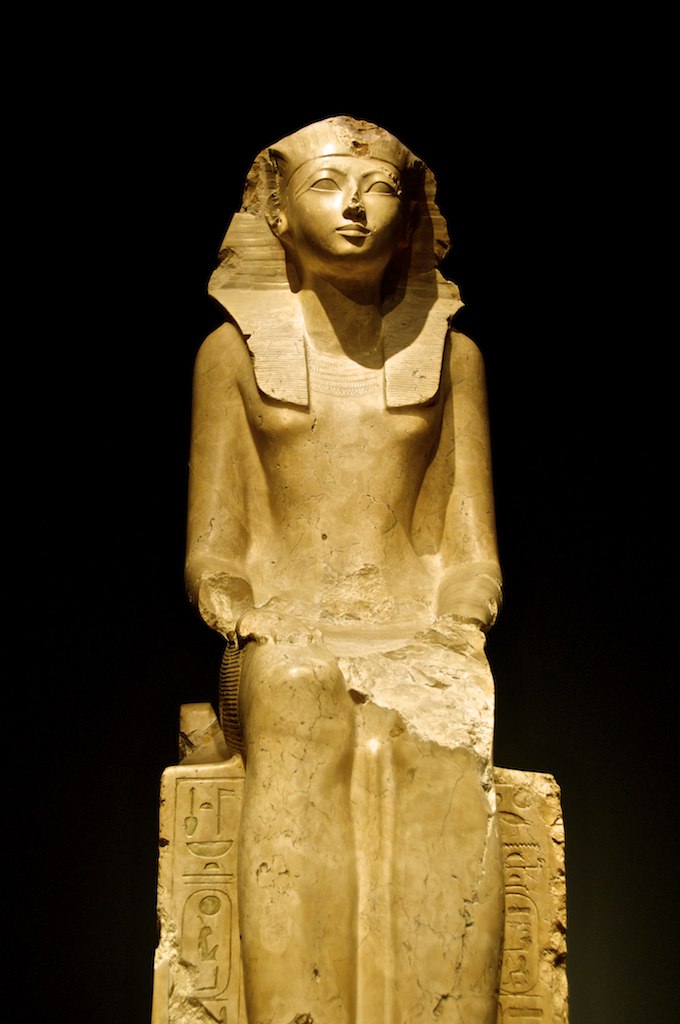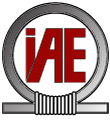
Egyptology is characterized by a wide range of research fields covering different areas of time and space. Besides, it covers philological, archaeological, and cultural research on Ancient Egypt and adjoining fields.
Today scientists are working on new methods to translate Ancient Egyptian texts using advanced computer-aided procedures. They now discover new archaeological sites to examine the shape of Egyptian society. To do so, they collaborate with experts from natural science, linguistics, geography, and informatics.
Therefore, people worldwide contribute to the latest research on this ancient civilization.
Besides the many topics of research projects in Egyptology, the following list mainly presents larger projects working internationally or supraregional.
Austria
MeKeTRE (Middle Kingdom Tomb Relief Evolution)
MeKeTRE (Middle Kingdom Tomb Relief Evolution) is an interdisciplinary research project, undertaken by the Institute of Egyptology in cooperation with the Department of Distributed and Multimedia Systems at the University of Vienna. Funded under project number P21571 by the Austrian Science Fund (FWF), MeKeTRE seeks to collect, research, and study the reliefs and paintings of Middle Kingdom tombs systematically. One main aim is to map and elaborate the development of the scenes and their content in comparison to the Old Kingdom.
Technologically speaking, the project involves the research-based development of the MEKETREpository, a specialized software solution supporting the assessment, organization, and analysis of the material compiled and of bibliographic metadata. The repository should encompass all theme complexes attested in two-dimensional art of the period in question. Attestations for each individual theme will be listed in the database with data such as necropolis, tomb number, tomb owner, date, technique (execution), location in the tomb, primary bibliographical references, etc. When possible, an image of the theme will be made accessible. The general themes constitute the ‘upper layers’ of the database. They will be arranged according to well-established categories such as marsh-related activities, animal husbandry, craftsmanship, etc.
From this point onwards it will be possible to probe downwards to more refined levels, in order to reach particular scenes, associated motives, and, finally, even individual icons (e.g. specific objects such as tools, fauna, flora, etc). This basic structure enables the researcher to access archaeological, bibliographical, chronological, and geographical information about Middle Kingdom scenes and details of scenes throughout Egypt.
AcrossBorders
Settlement patterns in Egypt and Nubia in the 2nd Millennium BC are the main fields of research of the ERC starting grant project AcrossBorders.
Situated across ancient and modern borders and of diverse environmental and cultural preconditions, but with a long history of changing interactions and influences, the study of variations in the local urban patterns is important. The architecture and structure of the Egyptian towns established in Upper Nubia during the New Kingdom (c. 1539-1077 BCE) are almost unknown as is the case for the social stratification and material culture of these sites. The settlements in Nubia have rich potential not only because of their excellent state of preservation but especially because Egyptian culture abroad was confronted with a local Nubian tradition. Current topics like integration and acculturation can be tackled with this ancient example – how did the local Nubians react to foreign influences and how did the Egyptians present themselves outside of Egypt?
Sai Island as the prime example of the settlement policy of New Kingdom Egypt in Upper Nubia is the focus of this project. Sai is a French concession of University Charles-de-Gaulle Lille 3 (http://halma-ipel.recherche.univ-lille3.fr/ ), and AcrossBorders is carried out with both the kind approval of the concession holder Prof. Didier Devauchelle and the Sudanese authorities, the National Corporation for Museums and Antiquities in Sudan (Khartoum), especially its General Director Dr. Abdelrahman Ali Mohamed.
Belgium
Pyramids and Progress. Belgian Expansionism and the Making of Egyptology 1830-1952
This EOS project, co-funded by FWO-Flanders and FRS/F.N.R.S., is a collaboration, coordinated by the Egyptology unit of KU Leuven, between this university and the University of Gent, the Université Libre de Bruxelles, the Musée Royal de Mariemont, and the Royal Museums of Art and History. It runs from 1 January 2018 until 31 December 2022.
In Belgium, Egyptology emerged later than elsewhere in Europe, but once under steam, it went through a rapid growth in the course of the first half of the 20th century. In the 1930s Brussels was occasionally even referred to as ‘the capital of Egyptology’. Pyramids and Progress investigates how this remarkable development unfolded within the context of Belgian industrial and political expansionism towards Egypt, a process that started in the 19th century, almost from the very moment that the Belgian state was created in 1830. At that time, Belgium in all regards aspired to become a player on a global scale. This aspiration not only concerned Congo, which was to become a genuine colony, but areas around the globe. Egypt, with its strategic location in Africa and its fascinating ancient monuments, played a key role. But what motivated this Belgian interest in Egypt? How did Belgian royalty, politicians, diplomats, industrialists, and intellectuals operate within the expansionist doctrine? And how did the scientific discipline of Egyptology develop in Belgium within this expansionist framework? The personal, institutional, and commercial networks of the different players are investigated, and the question is asked how this led to a climate in which famous Egyptologists like Jean Capart proved able to give their discipline the prominent position it finally acquired in Belgium.
France
Directory of Egyptological Archives
This Directory, which has no budgetary support and in its present state has no pretense of being exhaustive, nevertheless brings together for the first time the major institutions holding Egyptological archives. The intention is to update this Directory regularly, on the basis of voluntary contributions. Anyone who wishes to modify or add to the database is invited to send an e-mail to archives@ifao.egnet.net. The information included in this Directory does not incorporate the Ifao archives.
Germany
Kooperation der Akademie der Wissenschaften und der Literatur Mainz, Johannes Gutenberg-Universität Mainz, Technische Universität Darmstadt
The Athribis Project is an archaeological and philological research project located at the Department of Egyptology, Institute of Ancient Near Eastern Studies – IANES, Eberhard-Karls-Universität, Tübingen. It is realized in cooperation with the Egyptian Supreme Council of Antiquities as well as various scientific research institutions and freelance researchers from Germany, Poland, England, and France. The project’s main goal is the archaeological exploration of the ancient town of Athribis in Upper Egypt, whose history reaches from the 4th century BC to the 11th century AD. The focus of the project’s research is the large Ptolemaic-Roman temple dedicated to Min and Repit.
“The ancient Egyptian necropolis of Asyut: documentation and interpretation”
Long-term project with close cooperation between the Johannes Gutenberg-Universität Mainz, the Freie Universität Berlin and the Sohag University/Middle Egypt. The last seven seasons of fieldwork focused on the famous tombs of nomarchs from the First Intermediate Period and the Middle Kingdom, as well as on visitors’ graffiti from the New Kingdom, and a hitherto unknown necropolis of canidae. The research objective is to examine the necropolis mountain Gebel Asyut al-gharbi, due to its chronological and qualitative contribution over several millennia, as Asyut retained a large role of the cultural memory of ancient Egypt.
The Qantir-Pi-Ramesse Project
The Qantir-Pi-Ramesse Project is an archaeological project based at the Roemer- and Pelizaeus-Museum Hildesheim and the Humboldt-University Berlin. Having started in 1980, it focuses on the exploration of the vast remains of Egypt’s Ramesside capital Pi-Ramesse in the eastern Nile Delta.
In the past, the excavations uncovered technical installations such as foundries for bronze production and material related to glass making and glass coloring. Furthermore, a training ground and stables for more than 480 horses were found. Based on the results of a large scale magnetic survey, recent work focuses on the excavation of a large palace/temple complex. The results are being published in a series of monographs, called “Forschungen in der Ramses-Stadt”. So far ten volumes are available.
Die Zahl der im Gebiet der Arbeitersiedlung von Deir el Medine gefundenen Ostraka mit nichtliterarischem Inhalt hat die 10.000 bereits weit hinter sich gelassen und wird möglicherweise auch die 20.000 noch überschreiten. „Deir el Medine online” dient dem Ziel, dieser Textflut mit Hilfe moderner Technologien Herr zu werden. Die Ostraka werden in einer heutigen wissenschaftlichen Anforderungen gerecht werdenden Weise bearbeitet und unter Nutzung der technischen Möglichkeiten, die dieses Medium bietet, im Internet publiziert. Die Präsentation der einzelnen Texte folgt einem einheitlichen Muster: Sie werden jeweils anhand eines detaillierten, für alle Ostraka gleichen Schemas beschrieben, hieroglyphisch transliteriert, phonetisch transkribiert, übersetzt und ausführlich kommentiert. Die Dokumentation wird durch eine farbige Digitalfotografie – bei Bedarf auch durch mehrere – komplettiert. Außerdem erlaubt das System umfassende Recherchemöglichkeiten im gesamten Datenmaterial. Damit kann ein grundlegendes – und durch zusätzliche Daten jederzeit erweiterbares – Instrumentarium für die Arbeit mit diesen Texten zur Verfügung gestellt werden.
Datenbank zur Literaturrecherche im Fachgebiet
Great Britain
A new database, built up by Jaromir Malek and his team, is now online.
The Griffith Institute in Oxford has one of the largest collections of 19th-century “studio photographs” of Egypt. They were taken by professional photographers who had their studios in the major tourist centres of Egypt such as Cairo, Alexandria, Port Said, Luxor and Aswan between about 1860 and 1890. The photographs show ancient Egyptian, Christian and Islamic monuments, as well as scenes of contemporary 19th-century life.
The Egypt Exploration Society (EES)
Portugal
“The Gate of the priests (Bab el-Gasus project)
– Funeral pragmatics of the ancient Egyptian (religious) elite in the Third Intermediate Period. The Gate of the Priests (bab.gasus@gmail.com) is an international project based on Centro de Estudos Clássicos e Humanísticos (University of Coimbra), involving the University of Leiden, the National Museum of Antiquities of Leiden, the Vatican Museums and the University of California – Los Angeles. Its main purpose is to recreate/reconstruct the original integrity of the Egyptian burials dating to the Third Intermediate Period, namely the collective tomb of the priests and priestesses of Amun (Bab el-Gasus), among other burial assemblages dated from the 21st Dynasty.
Switzerland
University of Basel MISR: Mission Siptah – Ramses X.
Excavation, documentation and publication of KV 18 (Ramses X), KV 47 (Siptah) and KV 32 (Queen Tiaa)
University of Basel Kings’ Valley Project
Nonroyal tombs in the Valley of the Kings
A contextualised, interdisciplinary approach to the written material produced by the highly literate ancient Egyptian Community of Deir el-Medina.
Life Histories of Theban Tombs
The project focuses on a cluster of rock-cut tombs built during the 2nd millennium BC at the hillside of Sheikh ‘Abd el-Qurna in Western Thebes
The Netherlands
The new webbased Netherlands scientific journal on the archeology of Egypt/Egyptology.
Leiden University: “The Walking Dead at Saqqara: The Making of a Cultural Geography”
National Museum of Antiquities, Leiden & Museo Egizio, Turin: “Saqqara”
USA
The Demotic Dictionary Project
The Oriental Institute, Chicago
MFA Boston
Vatican City State
Your international project is missing? Or do we need to change something? Get in touch, and we will help.
